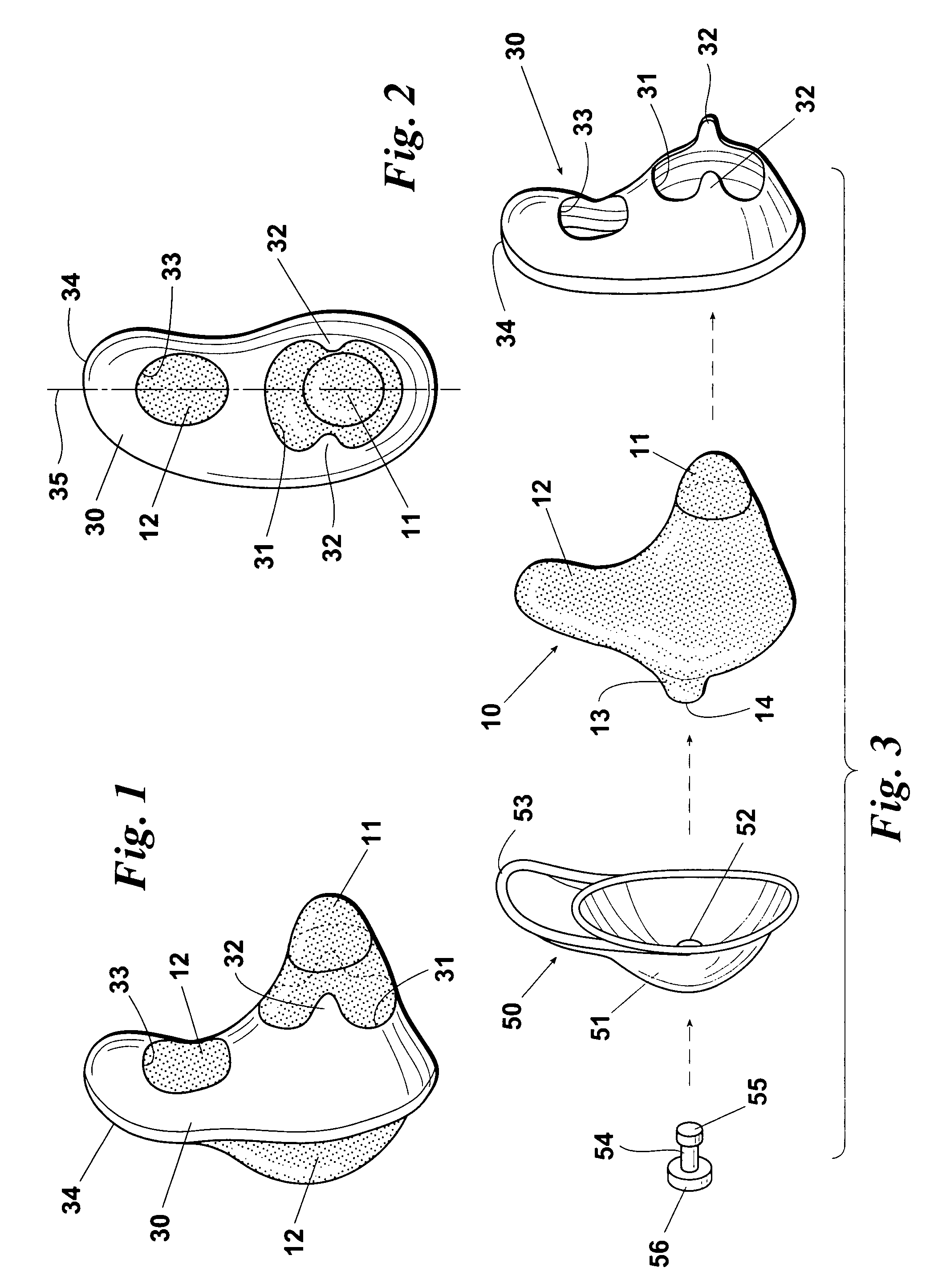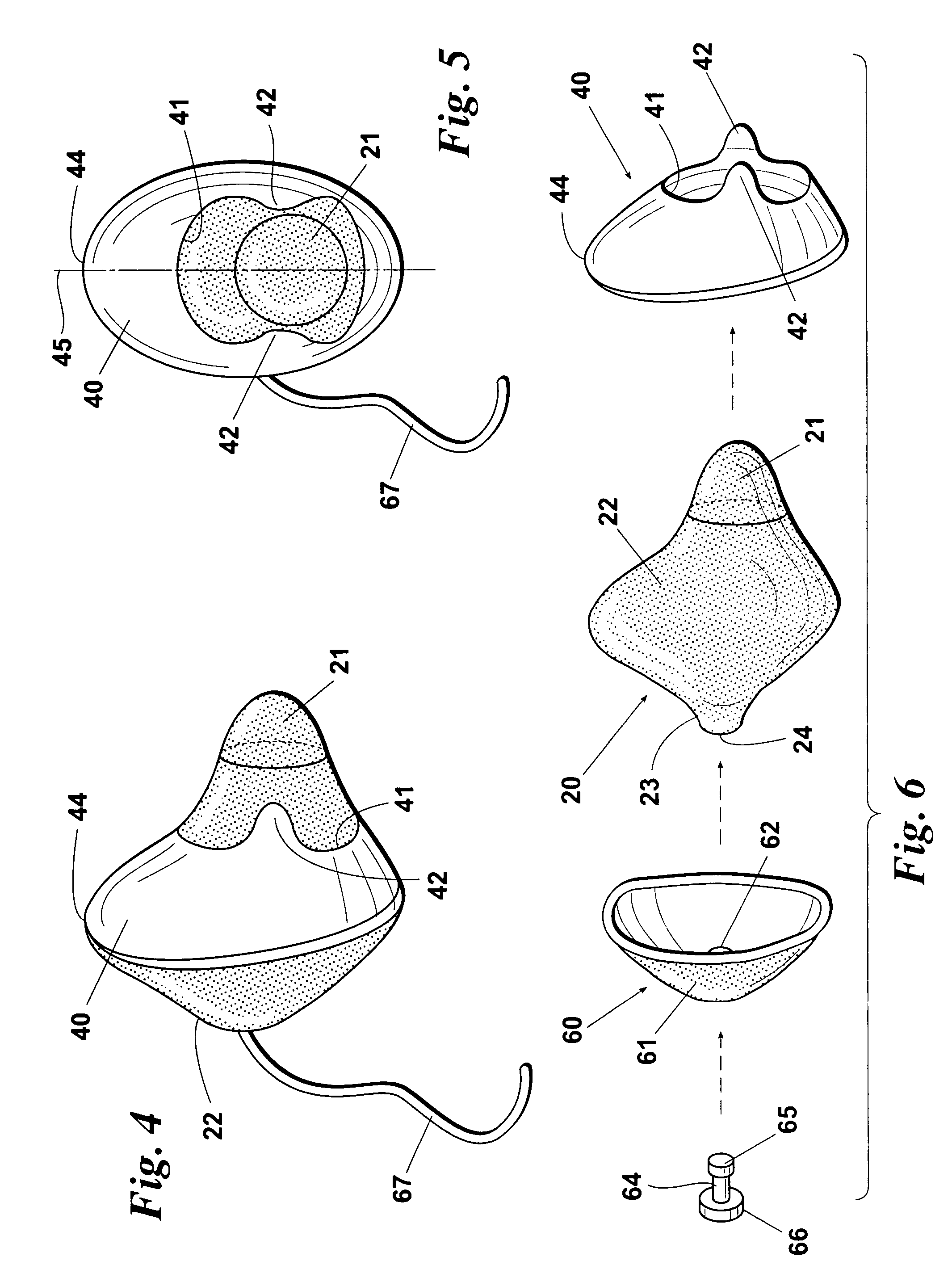Disposable plug for warming the inner ear
- Summary
- Abstract
- Description
- Claims
- Application Information
AI Technical Summary
Benefits of technology
Problems solved by technology
Method used
Image
Examples
Embodiment Construction
[0017]Looking at the FIGS. 1–3, an asymmetrical embodiment of a disposable plug for generating heat to warm an ear canal is illustrated. As best seen in FIG. 3, the principle structural components of the asymmetrical plug are an envelope 10, a mask 30 and a trigger 50.
The Envelope
[0018]The primary functions of the envelope 10 or 20 are to contain the phase-change heat-generating chemicals of the plug and to penetrate into and conform to the ear canal C in the initial stages of activation. The envelope 10 or 20 has two major portions, a leading tip 11 or 21 and a trailing reservoir 12 or 22. In the pre-activated state of the plug the entire envelope 10 or 20, including the tip 11 or 21 and the reservoir 12 or 22, is substantially filled by the phase-change chemicals in their liquid state. The envelope 10 or 20 can be formed from a variety of materials. Rubber compounds such as bromobutyl rubber have sufficient strength and elasticity. Latex blends are generally more resilient than ru...
PUM
 Login to View More
Login to View More Abstract
Description
Claims
Application Information
 Login to View More
Login to View More - R&D
- Intellectual Property
- Life Sciences
- Materials
- Tech Scout
- Unparalleled Data Quality
- Higher Quality Content
- 60% Fewer Hallucinations
Browse by: Latest US Patents, China's latest patents, Technical Efficacy Thesaurus, Application Domain, Technology Topic, Popular Technical Reports.
© 2025 PatSnap. All rights reserved.Legal|Privacy policy|Modern Slavery Act Transparency Statement|Sitemap|About US| Contact US: help@patsnap.com



